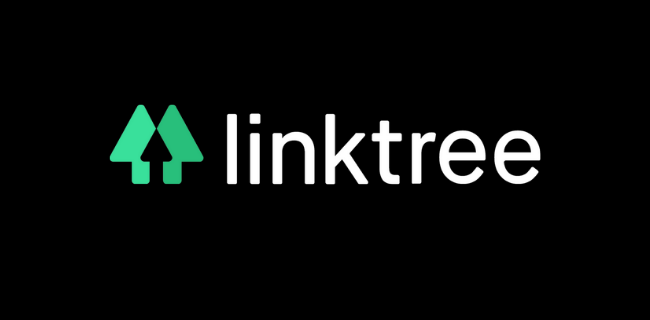With more than two billion monthly active users, Instagram is one of the best platforms to drive traffic to your website. While you can’t directly link URLs in your posts, a popular method is to include a link in your bio for users to click.
Instagram offers one clickable link in a bio. That single link becomes critical when directing traffic. Link Tree transforms that limitation into an opportunity. It turns one link into many.
What Is Link Tree?
Link Tree is a web-based tool designed to host multiple links through one URL. It works by generating a single link that points to a mini landing page. That landing page can hold links to a website, blog, product pages, social profiles, or any online destination.
Designed to bypass Instagram’s link constraint, Link Tree quickly gained popularity among influencers, marketers, and businesses. The link is placed in the Instagram bio. When tapped, it opens a menu of links selected by the account owner.
Why Instagram Needs Link Tree
Instagram restricts clickable URLs. Only one bio link and no clickable links in captions. That limitation blocks direct traffic flow. Without a solution, businesses lose leads and conversions.
Link Tree fixes that. It opens multiple traffic gates through a single access point. It enables redirection to a website, ecommerce store, booking platform, or newsletter signup page. For creators and businesses, it becomes a traffic router.
How to Set Up Link Tree
Link Tree setup is simple. Create an account, then add destination URLs. Arrange them by priority. Style the landing page to match the brand. Copy the Link Tree URL and place it in the Instagram bio.
Each time a follower taps the bio link, they see the entire set of available options. That single action expands choices. Instead of choosing one destination, all key links become accessible.
Designing for Engagement
Link Tree provides themes and style settings. Branding matters. Colors, fonts, and icons should align with the Instagram profile’s design.
A visually consistent Link Tree page improves click confidence. Audiences are more likely to tap if it feels trustworthy and professional.
Custom thumbnails, emojis, or short descriptions under links can increase engagement. Short link titles perform better. “Shop New Collection” gets more clicks than “View our latest fall/winter catalog now live on our store.”
Tracking and Optimizing Performance
Understanding what drives clicks helps shape future content and campaigns. Link Tree’s analytics tool gives actionable metrics:
- Total visitors
- Total link clicks
- CTR per link
- Traffic source breakdown
Patterns emerge. For example, product links may spike after a new post. Newsletter signups may drop if placed too low on the list. These insights guide better link placement and strategy.
Connecting Link Tree with Website Goals
Driving traffic is only the first step. What happens after the click matters more. Each link should lead to a page designed for conversions.
Ecommerce stores should highlight new arrivals, discounts, or limited-time offers. Blogs should lead with engaging headlines and strong calls to action. Contact pages must load fast and be mobile-friendly.
Link Tree becomes the gateway. The linked pages must deliver results. Align every link with a measurable goal.
Using Link Tree for Business and E-commerce
Product discovery often starts on Instagram. With Link Tree, direct users to:
- Featured collections
- Sale items
- Pre-orders or waitlists
- Bundle offers
- Loyalty program signups
Time-sensitive links should be updated daily. Promote flash sales or seasonal deals prominently.
Use click data to adjust inventory focus. If a product page underperforms, reconsider its placement or copy.
Avoiding Common Mistakes
- Overloading the page: Too many options create friction. Fewer, focused links convert better.
- Ignoring analytics: Without tracking, strategy becomes guesswork.
- Poor design alignment: Off-brand visuals reduce trust.
- Dead or outdated links: Broken paths lead to drop-offs.
- No clear call to action: Link titles must motivate action, not confuse.
Leveraging Instagram Stories and Highlights
Instagram Stories and Highlights offer a second way to direct traffic to Link Tree. Use story stickers or “Link in bio” mentions to draw attention.
Highlight covers can be branded with icons that match the Link Tree categories. For example, use a cart icon for “Shop”, or a video icon for “Watch”.
Story content should tease the destination. Show a product preview or share a snippet of a blog post. Then point to the link in bio.
Long-Term Strategy and Conclusion
Social platforms change fast. Algorithms, features, and policies shift without notice. Relying too heavily on one platform is risky.
Link Tree offers some protection. It gives a bridge between social media and owned media. Moving Instagram followers to a website or email list creates long-term value.
Update links regularly. Refresh the design. Watch the analytics. A well-maintained Link Tree becomes a digital handshake that introduces users to the broader brand experience.
Link Tree unlocks traffic flow from Instagram. It offers a structured way to convert followers into readers, buyers, or subscribers. Simplicity and clarity make it work. Each link must earn its place. Each click must have intent.
Done right, Link Tree builds a path from a bio to a business. It transforms one link into a traffic engine. On Instagram, that makes all the difference.
Also Read:
